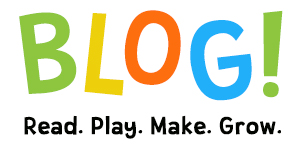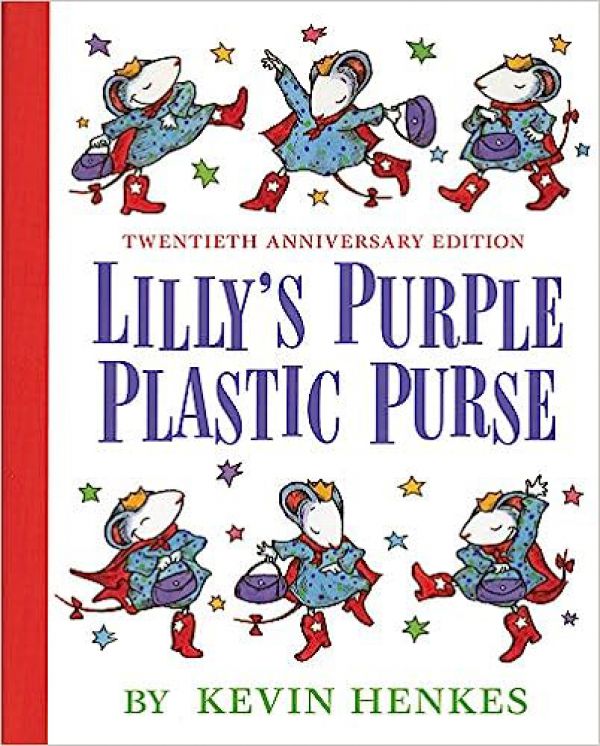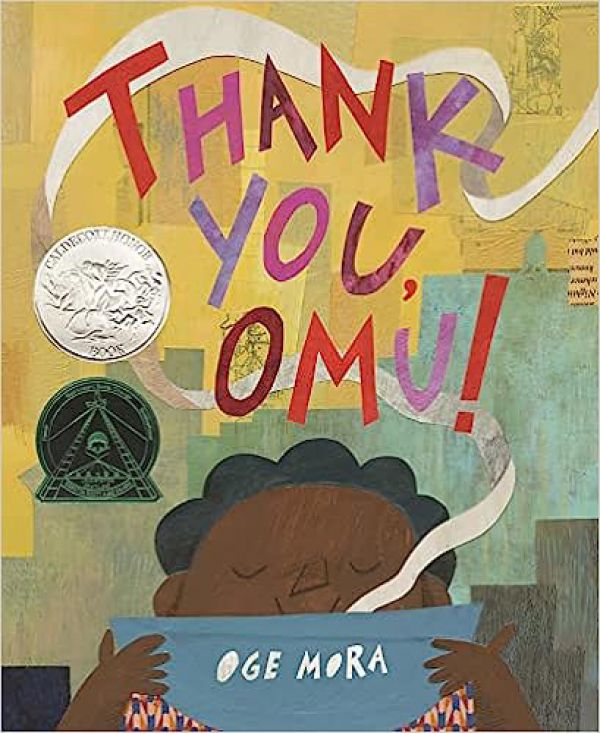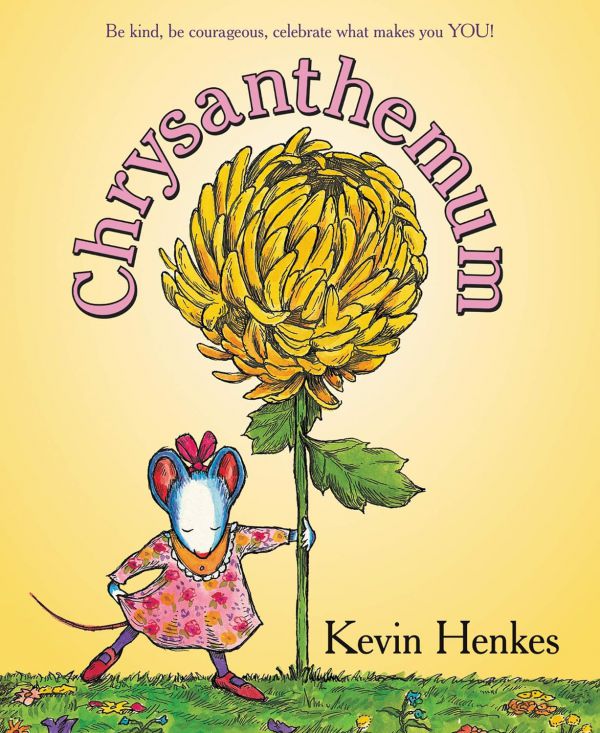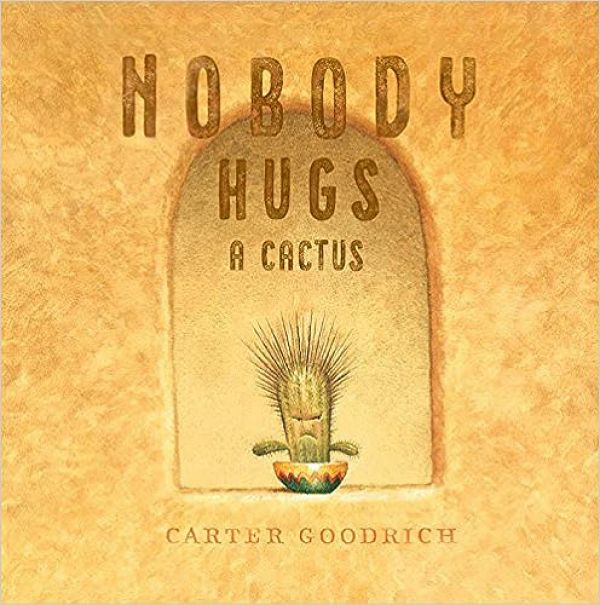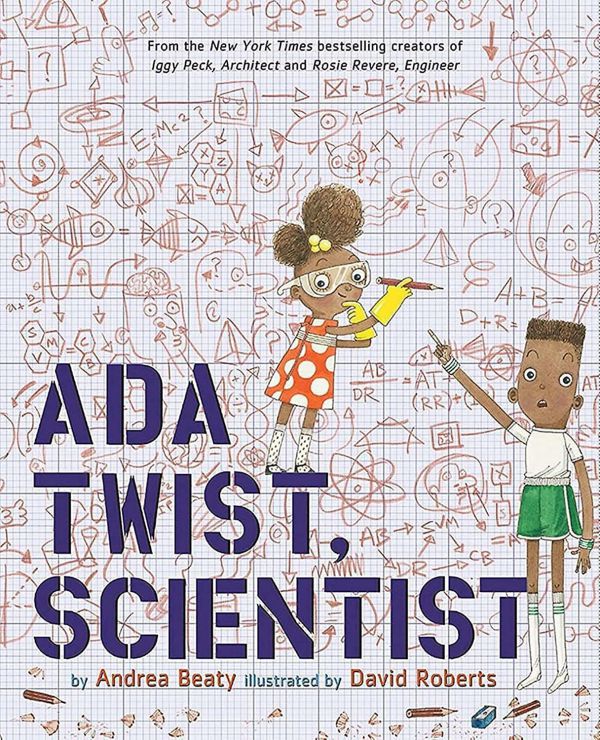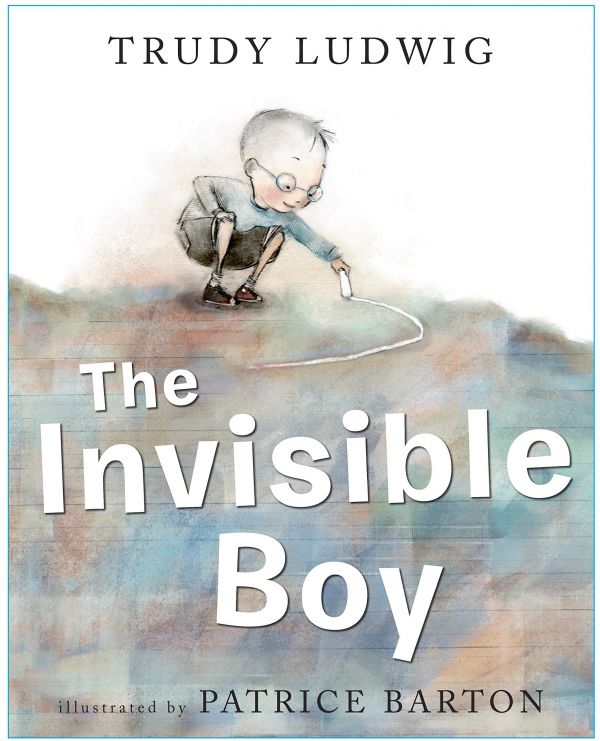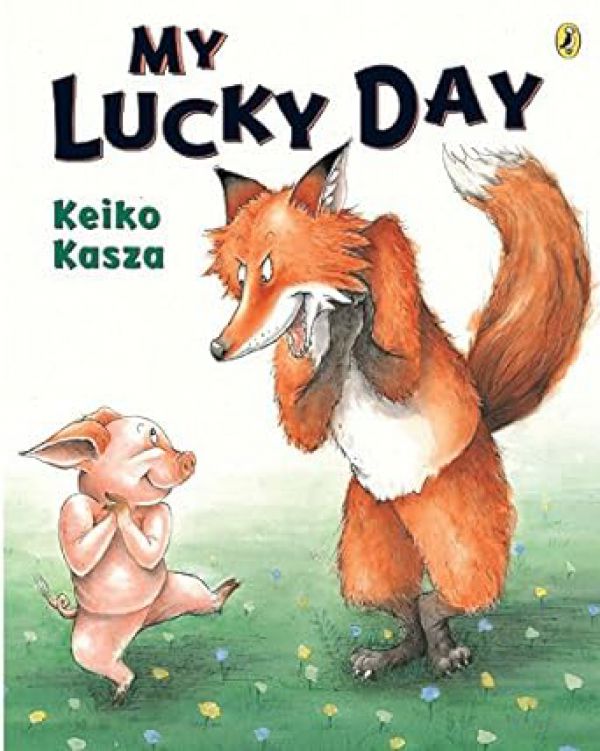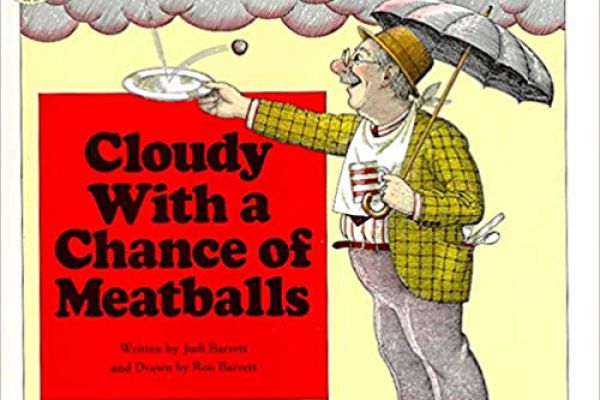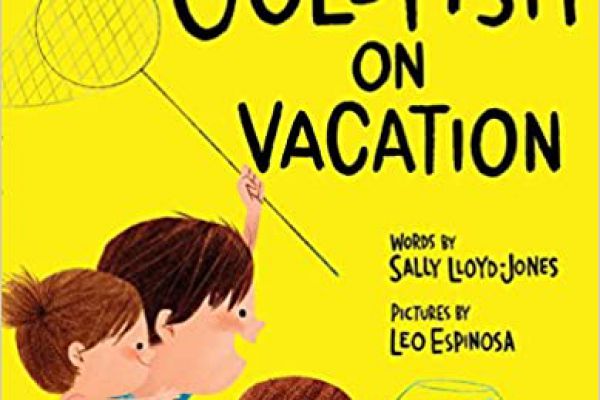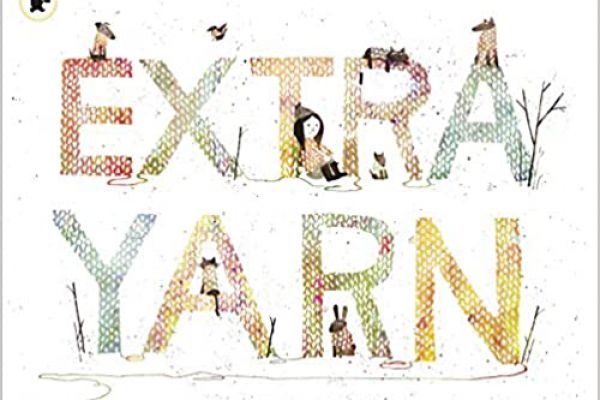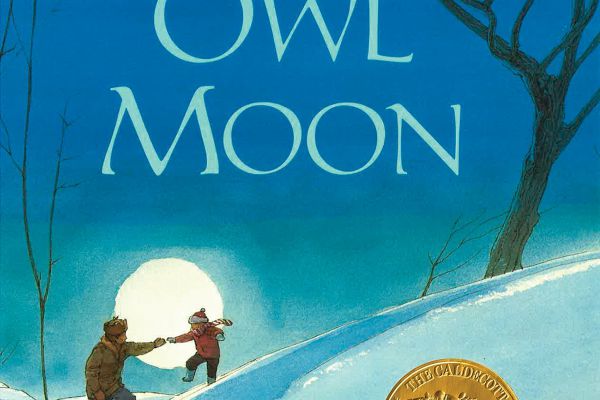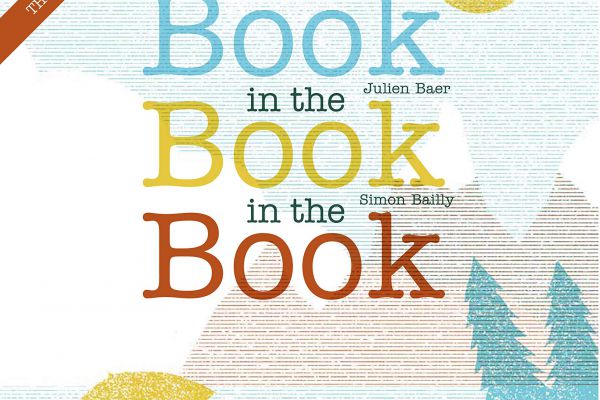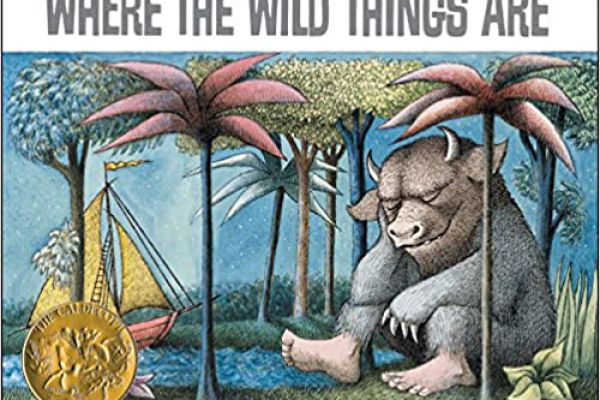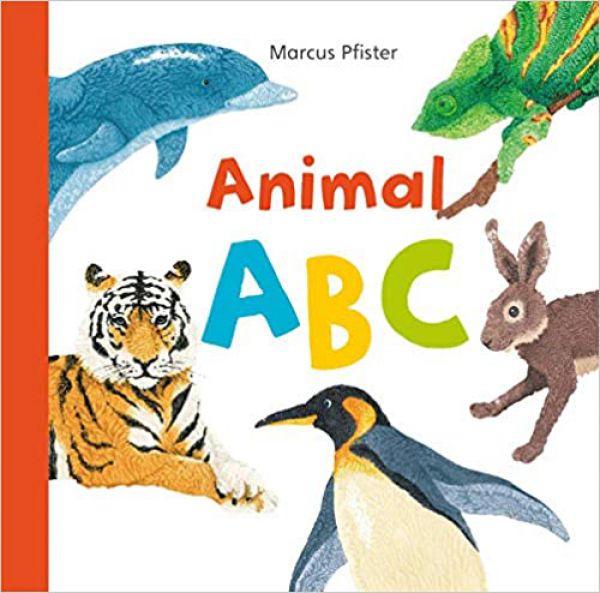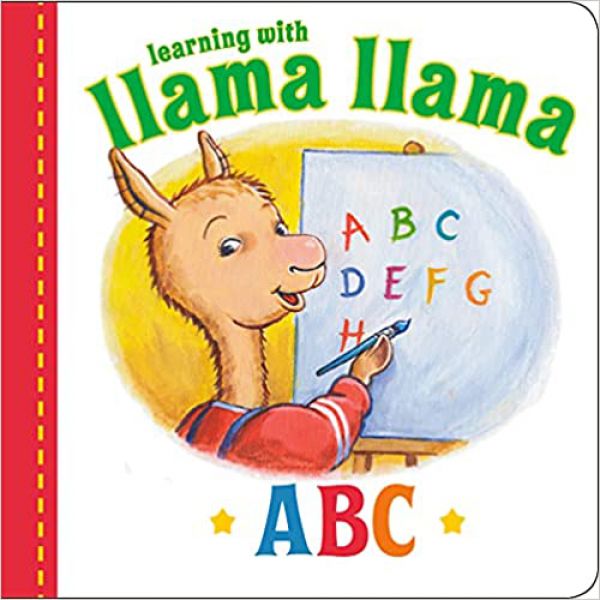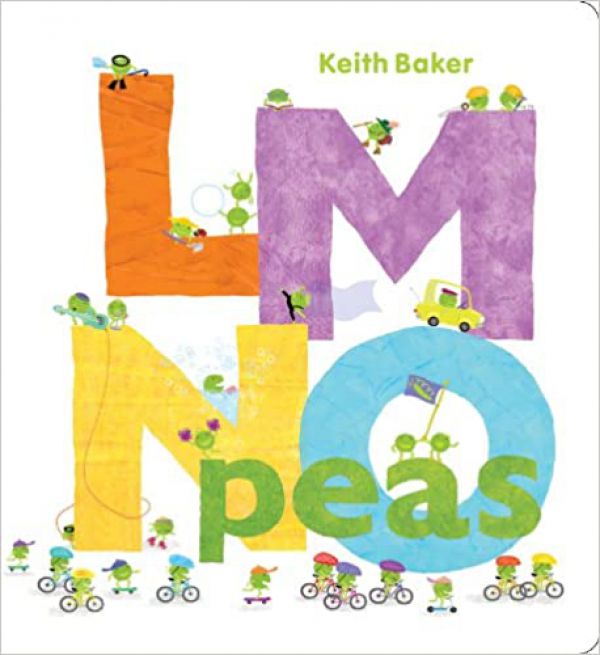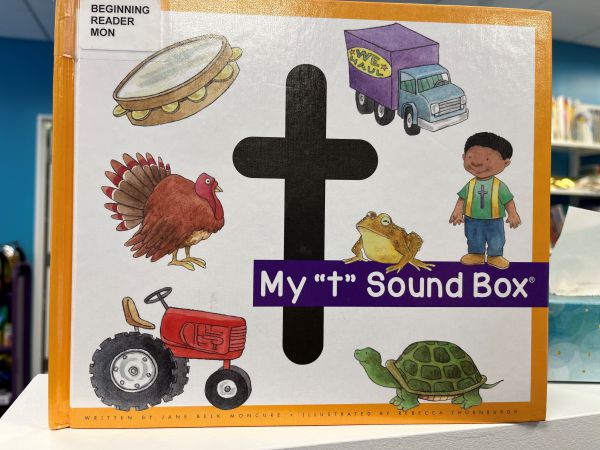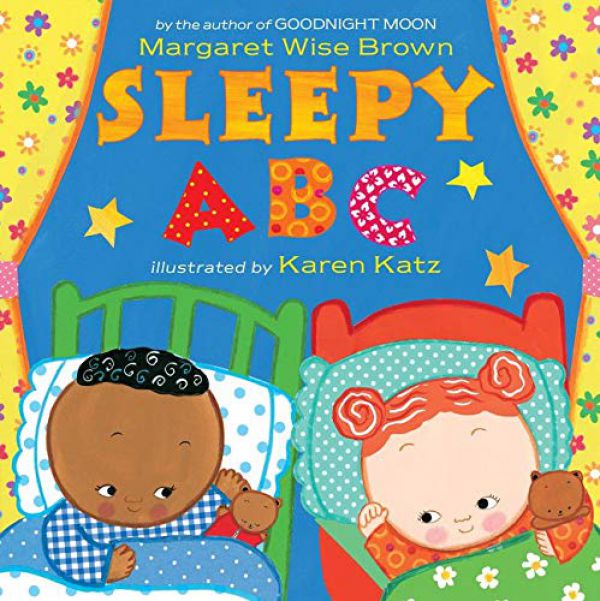-
The Ins and Outs of Character Traits
Welcome back to a new school year!Since the school year is in full swing, we will be continuing our Literacy Blog to provide some fun tips and activities for beginning, independent, and emerging readers. We ended our series with identification of the story setting. This month, we will be focusing on another Story Element- Character Traits.

What is the purpose of identifying character traits? Character traits help readers understand the characters in a story. It helps the reader to understand why the characters do what they do.
A Character Trait is a description of a character in the story. These traits can be outer or external traits or inner or internal traits.
Outer traits or external traits are easier to introduce. These are traits that are physical. Ask yourself; what can I see?
Some examples of outer or external traits are eye color, height, hair color, etc.
Inner or Internal traits can be a little tougher to identify because these are traits you must infer (inferring is when you use clues the author gives you and your own knowledge to recognize traits) in order to determine something. Ask yourself; what clues is the author giving me? What do I know about that?
Some examples of internal traits are what a character says, actions they do and feelings, or thoughts they have. An example of an internal trait is “Jean went over to console a friend who was crying.” This may be an example of a character being sympathetic, because they are empathetic towards a friend who is unhappy.
You can apply this to any book (board books, picture books, and chapter books.)

Here are some books that showcase Character Traits
 Activities
Activities The following activities will provide practice in identifying external and internal traits of characters you encounter as you read.
Activity: What Are Your External and Internal Traits?
- You will need 2 body outline templates; these can be found online, or you can draw them yourself. Label one sheet, “External Traits,” and label the other, “Internal Traits.” (see the images below)
- Identify your External Traits: Begin by focusing on your External Traits. (External Traits are your appearance) Use adjectives to describe your appearance, or your External Traits. What color is your hair? What color are your eyes? Describe your height. Write these describing words on the “External Traits” sheet. Write the words on the outside of the body image.
- Once you have documented your External Traits, use the second image to describe your Internal Traits. Remember, these traits cannot be seen from the outside. (Internal Traits encompass your personality, emotions, skills, and interests)
Write these words on the inside of the body outline.
*Personality traits: friendly, confident * emotions (grumpy, sad),
*Skills (artist, athlete) * interests (reading, cooking).
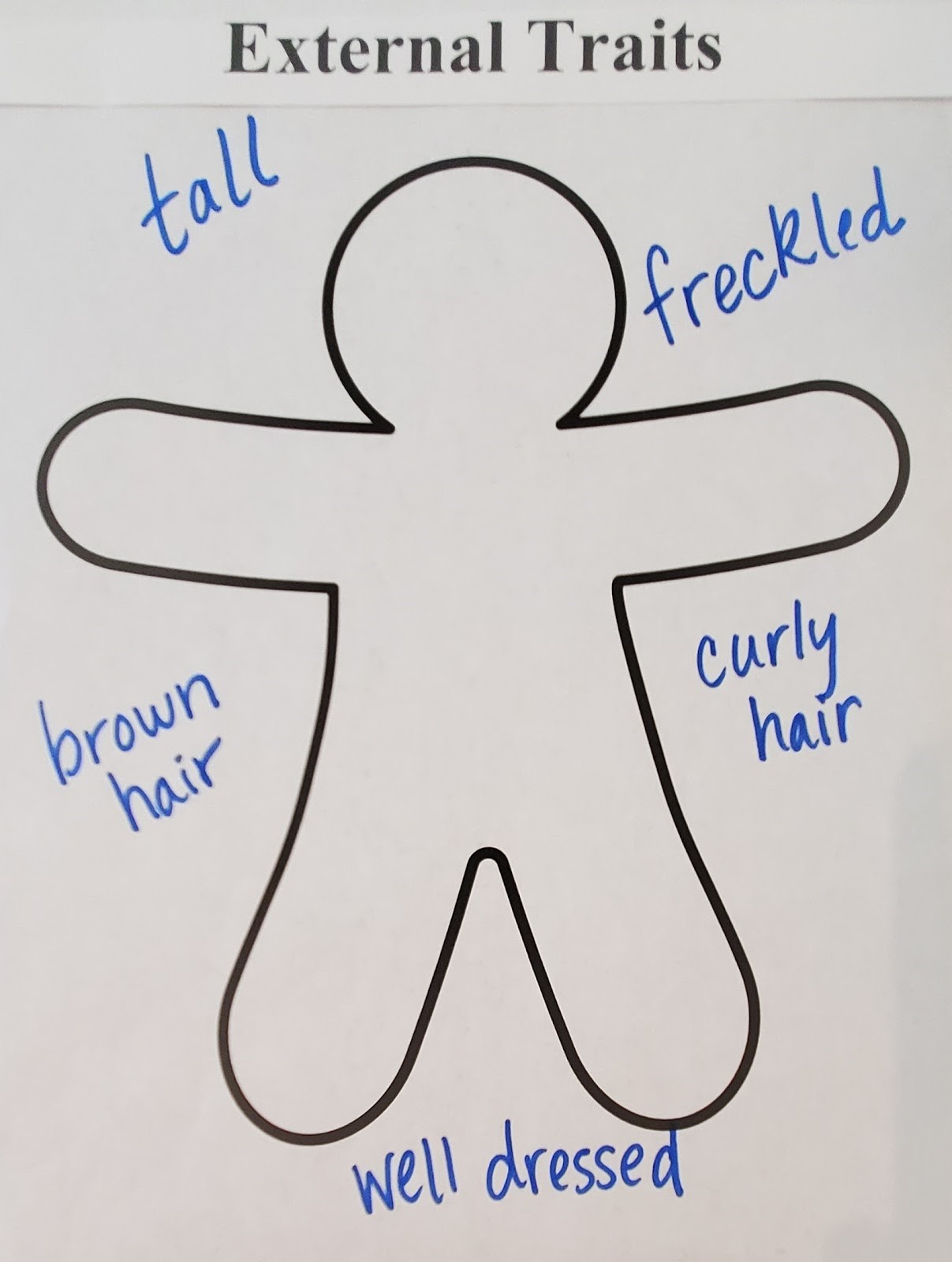

By following these directions and using body outlines on paper to describe External and Internal Traits, you can create a visual representation of any individual or character.
Extend and Explore
In the story Nobody Hugs a Cactus by Carter Goodrich, Hank changed his feelings and attitude (internal traits) during the story. Draw a picture of Hank at the beginning of the story, and another picture of him at the end of the story. You can see how Hank’s unique traits contributed to his personality and played a role in how the story develops.
Activity: Which Wall
This fun activity helps to explore and understand different character traits and will help your reader understand the difference between External and Internal Traits.
1. Gather two index cards. Write EXTERNAL TRAITS on one card & INTERNAL TRAITS on the other card.
2.Tape the cards on opposite walls.
3. Have your reader stand in the middle of the room.
4. Say a character trait and your young reader will go to the wall it matches. For example, if you say “bossy”, they will go to the “Internal Traits” wall.
Need a wordlist to get you started? Here are a few suggestions:
External Traits tall short brown hair fuzzy tail freckled well dressed floppy ears green eyes Internal Traits bossy lazy curious alert jealous shy outgoing creative Extend and Explore
Using several index cards, write different character traits on each card. Place the cards, face down, and take 1 card from the pile. Without anyone else seeing the card, the reader will describe a scenario or situation that exemplifies the word on the card. For example, if the card says “honesty” the reader might describe a situation where someone finds a lost wallet and returns it to its owner.

Practice Makes Perfect!
Understanding character traits is important to help a reader understand the story. Identifying character traits can help the reader understand a character’s motives, feelings, and actions. You can practice identifying external and internal traits in any book. Your reader can even think about external and internal traits of themselves or family members.
Be sure to check out our Beginning Reader and Early Learning Kits, available in the YS Department.
 Youth Services Assistant Librarian Erin
Youth Services Assistant Librarian Erin Youth Services Assistant Librarian Karen
Youth Services Assistant Librarian Karen -
Setting
What’s in a story? Story Elements
Setting:
A story's setting can be best described as the location, time, or time period of the story. It’s the where and when of a story. Some stories have a simpler setting, such as one place or location in which the story is set. As your reader progresses in their reading ability, storylines become more complex. Settings and the time period can occur in different locations throughout the story.
The setting of the story is powerful because it has a direct impact on what the characters experience in the story.
Questions to ask while reading with your child:
- What is the weather like? (Is it sunny, hot, snowing, etc.)
- Is it dark or light when the story takes place?
- What year or season is it?
- What does the environment look like? (forest, house, farm)
Here are some great books that showcase settings.
Activity: Setting Match Up
Read (or listen to) the following passages. Use context clues to identify the setting of each passage. Match the labels to the correct passage.
Extend and Explore:
Write your own setting for the two remaining word cards you didn’t use. Be descriptive and use details about the sights and sounds of your story. Then draw an illustration to fit the story/setting.
Activity:Calling All Artists
Goldfish on Vacation is a true story that occurred during the summers of 1992 to 2005. Read the story aloud to your young reader. Have your young reader think about where the story takes place. After listening to the story, have your reader draw a picture of the setting of the storywhile maybe even enjoying goldfish crackers.
Explore and Extend:
*After creating the illustration, use craft sticks to make a frame. You can also glue the illustration onto a deli tray.
*Play I-Spy -“I spy with my little eye…” using the last two pages of Goldfish on Vacation. This is an excellent activity for your young reader to practice describing, listening, and searching.
*Discuss the setting of the story and how the story might be different if it had taken place in a rural area or in the autumn. How would the story be different?
Activity:Compare & Contrast
After listening to Cloudy With a Chance of Meatballs, compare and contrast the town of Chewandswallow with your hometown.
Compare & Contrast
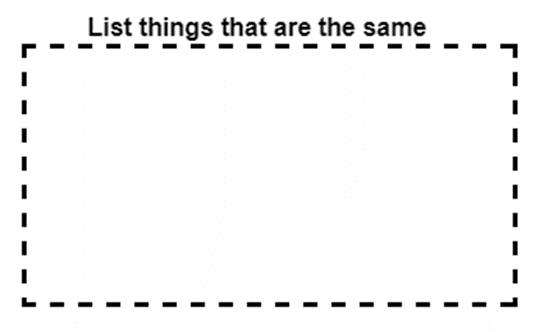
Extend and Explore:
Where would you rather live; in your town or in the town of Chewandswallow? What is your reason for your choice?
I would rather live in _______________because ___________________________________
Understanding the setting of a story is a key aspect to reading comprehension. The setting impacts the characters and the story's mood. It also helps to connect story elements, such as the characters, problems, solutions, and conclusions.
Have fun and explore, with your reader, other pictures books, or novels. Remember to apply some of the fun techniques and questions shown above or create your own!
Have fun and keep reading.
Be sure to check out our story kit in the Early Reader Kits, available in the YS Department.
 Youth Services Assistant Librarian Erin
Youth Services Assistant Librarian Erin Youth Services Assistant Librarian Karen
Youth Services Assistant Librarian Karen 2023 Summer Reading Secret Code: DISCOVER IDEAS
-
The ABCs of Reading - Letter Recognition
The ABC's of Reading - Letter Recognition
Helping children with reading can appear to be a daunting task. You may be asking yourself; Where do I even begin?
We are here to help!
Each month, we will provide different books and activities to break down this large task while still having fun!
Let’s start at the beginning...Letter Recognition and Single Letter Sound. Establishing letter recognition is very important. You can practice anywhere! The key is repetition.
Fast Tip- Use upper case letters first. Once your child has a grasp on upper case, you can introduce lower case letters.
Here are some fun books you can read with your child to help identify the letters of the alphabet and the sounds they make.
Activities to Try
Alphabet Soup
This “souper” fun activity is a great way for your child to practice letter recognition and letter sounds.
To begin:
- Fill a large plastic container ⅔ full of water.
- Then add 10 to 12 plastic letters and a ladle to the container.
- Place a small bowl and a spoon next to the large container. Have your child (you too) put on a pretend chef hat. Invite your little one to stir the pot and scoop out a letter while chanting:
“Stir the soup, it makes it taste better.
Now use the ladle to get a letter!”
- Have the child use the ladle to pull out any letter of their choosing and tell you what letter it is and/or its sound.
- Then place the letter in the small bowl.
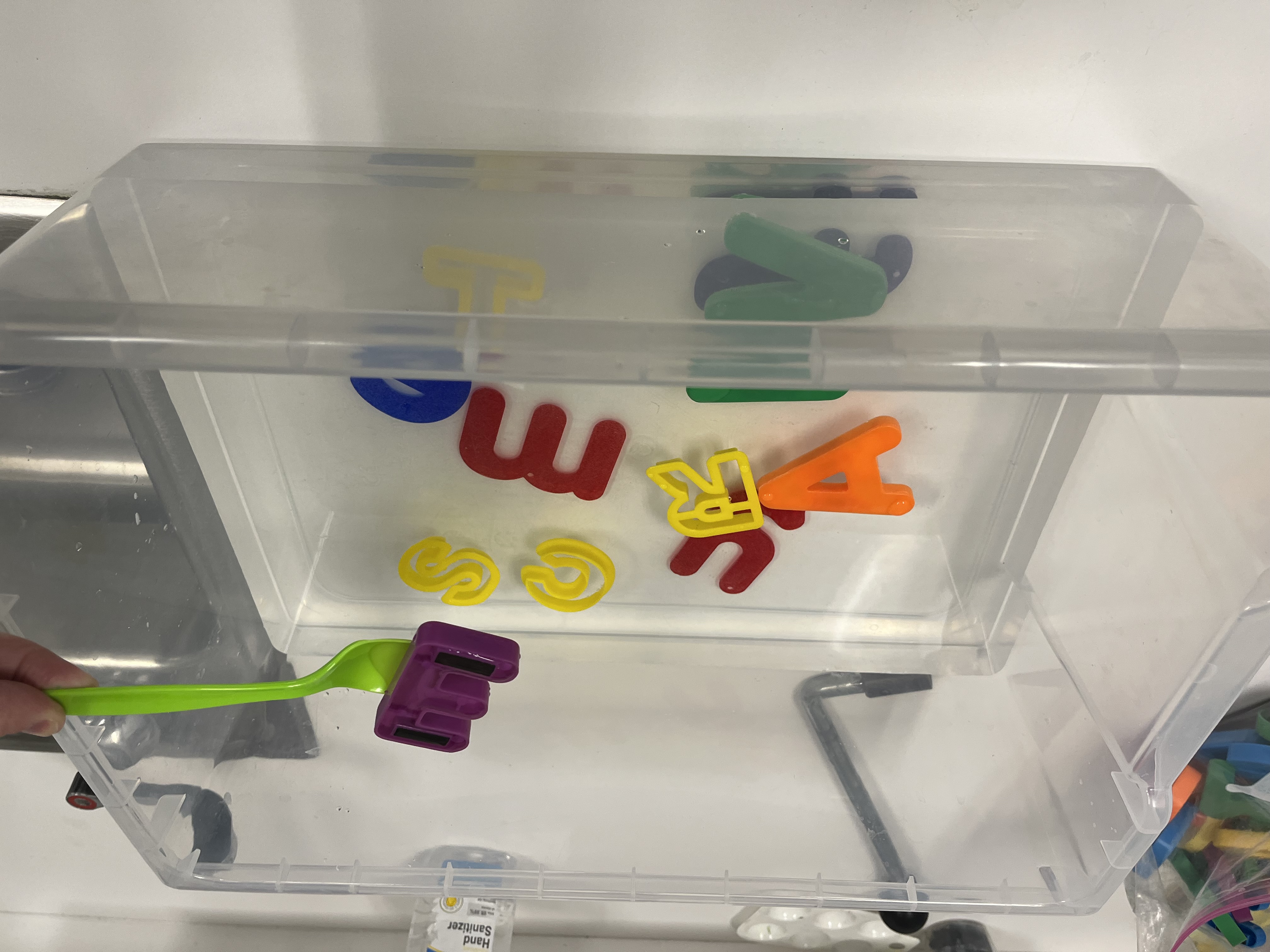
Extend and Explore:
Talk about the sound the letter makes and think of a word that begins with that sound.
Make some recipe cards. Read the cards to your little one, asking them to retrieve the necessary letters for the recipe. “This recipe needs a letter C and a letter E. Then, the recipe tells us to stir the letters together to make a yummy treat.”
Variation of the Activity:
Don’t want to use water? Modify the activity by placing the plastic letters in a pot, and retrieve the letter(s) using tongs or a large cooking spoon. Continue the activity as directed above.
Sensory Writing Trays and Sensory Play
You can make a sensory tray using ingredients found in your kitchen (salt, sugar, baking soda, just to name a few) and use what works best for you and your family. The easiest way to create the writing tray is to use a thin layer of the ingredient you choose.
The purpose of the tray is to allow young children to practice letters or pre-writing strokes without the stress of trying to write on lines with a pencil.
To begin:
- Model letter formation on the tray, making sure letters are formed from top to bottom.
- Have your little one trace the letter if necessary. Children can use the pointer finger of the dominant hand to trace the letter.
- After forming the letter with their finger, kids can gently shake the tray from side to side to “erase” the writing.
- Cards can be used as a visual model for forming letters. Position the cards inside the tray for near-point copying.
- For a younger child, simply making different sorts of lines (diagonal, horizontal, and zig-zag) is great pre-writing practice as well.
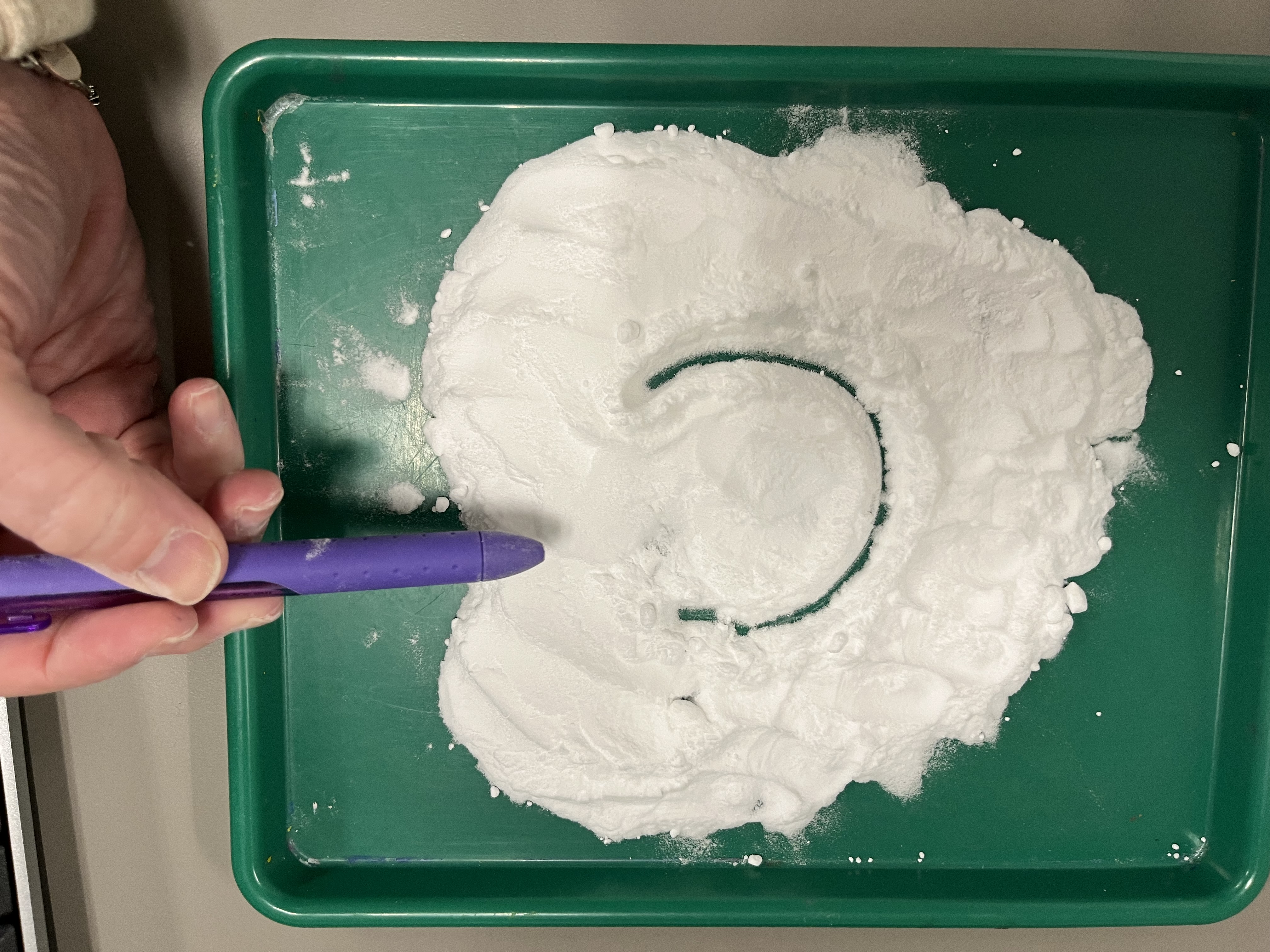
Extend and Explore:
*Other writing “tools” may include items found in the home such as: craft stick, chopsticks, cotton swab, or eraser end of a pencil.
Letters are Everywhere!
No matter where you go, you have an opportunity to see letters, at the grocery store, in the library, on clothes! What better way to review and practice the alphabet than to see letters in everyday life? Seeing letters in a variety of fonts, colors, and sizes, will also help your child get ready for reading.
Here are some activities you can practice anywhere!
- You can play "I spy” on a walk “I spy something that makes the mmmmmm sound.” See if your child can identify what makes that sound.
- If you are at a restaurant, you can have your child point to different letters they see on the menu. “Can you find all the T’s and S’s?”
If you are getting groceries, before entering the store, pick a letter or two that your child can find while shopping. “Can you find the letter B throughout the store?” “Can you find items that make the “B” sound?”



Have fun while exploring letters and sounds!
Next month we will be blogging on vowels! Stay tuned!
Be sure to check out our Beginning and Early Reader Kits, available in the YS Department.
 Youth Services Assistant Librarian Erin
Youth Services Assistant Librarian Erin Youth Services Assistant Librarian Karen
Youth Services Assistant Librarian Karen -
Beginning Reader Kits
We have a new line of Backpacks in the Youth Department! These are the Beginning Reader Kits - a set of nine backpacks designed for pre-readers and beginning readers. There are games, BOB Book sets, and other activities to do that will introduce and build reading concepts. The kits are: CVC Words, Letter Recognition, Word Recognition, Sight Words 1 + 2, Rhyming, Word Families, Word Building, and Storytelling. Find all nine kits in our catalog to see the contents of each kit and to place any of them on hold. If you check any out, be sure to let us know what you think by filling out the provided comment card!

Be sure to check out our other kits as well! STEM Kits, Early Learning Kits, and Board Games are all available in the Youth Department!
 Youth Services Assistant Librarian Claire
Youth Services Assistant Librarian Claire -
Unboxing Early Learning Kits: Active Play
We have a ton of different materials for our littlest customers, including our expanding Early Learning Backpack collection. We have several new Early Learning Backpacks.
Active Play
The active play kits feature books, balancing stones, or another interactive toy that promotes active and pretend play. Playing is an important component of early literacy development.
Balance Stepping Stones
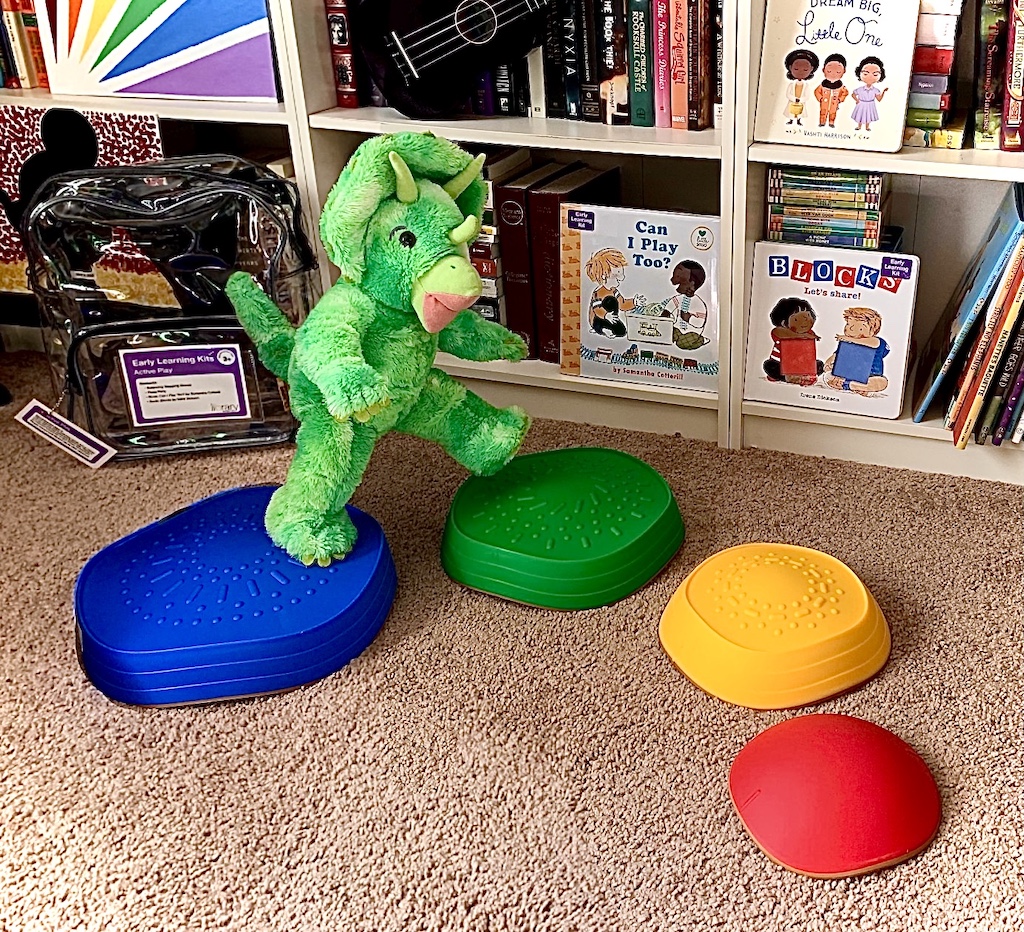
Let your little one get active with some stepping stones. The kit features 4 stepping stones that help promote gross motor movement. They also help your little one with balancing and coordination. Get creative and allow some imaginative play with the stepping stones as well.
Melissa & Doug Pizza Party Play Set
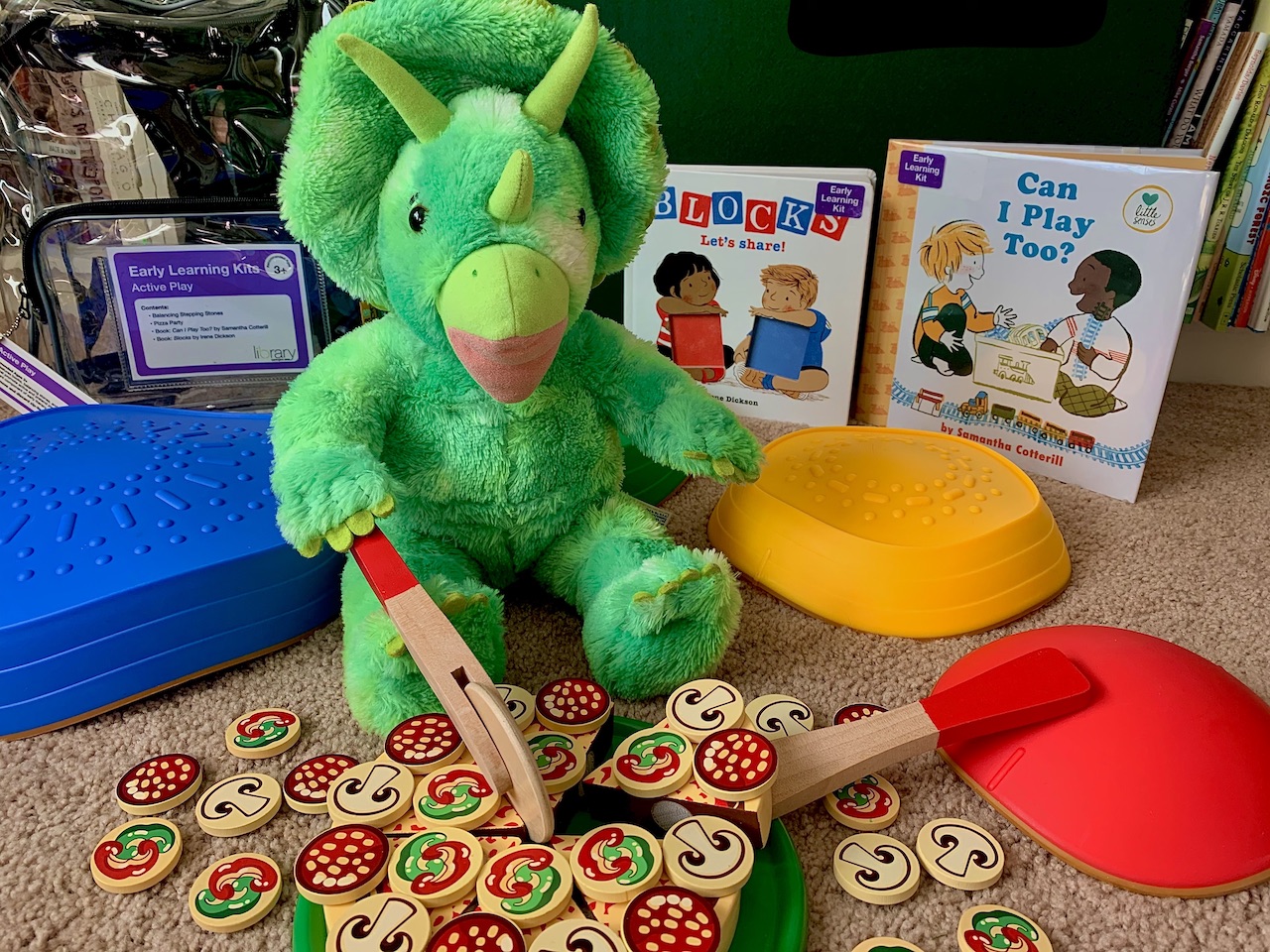
Have your child explore imaginative play and have some fun with a pizza party. Create and design your favorite pizza creations. With 63 pieces, your little one can play pretend, which will help with developing their abstract thinking skills.
Books
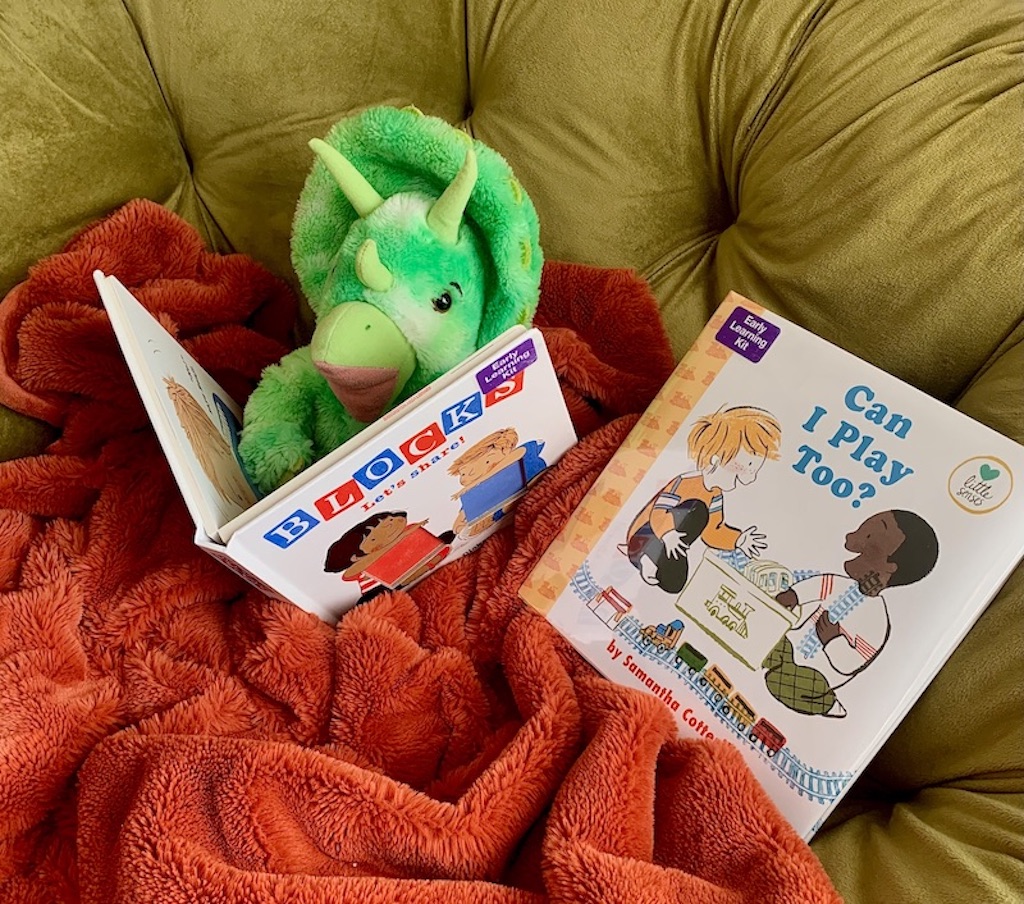
Learn different ways to share while playing, as you cuddle up to read some books.
Blocks by Irene Dickson
Can I Play Too? by Samantha Cotterill
Active play will help keep your child engaged and learning. Check out all of Early Learning Kits available at the library.
 Youth Services Assistant Librarian MaryJo
Youth Services Assistant Librarian MaryJo -
Unboxing Early Learning Kits: World Traveler and Families
We have many different types of materials for our littlest customers, including our Early Learning Backpack collection. We have several new Early Learning Backpacks available for checkout. Two of our newest Early Learning Kits, available to check out today, are the World Traveler and Families kits.
World Traveler
Start learning about cultures around the world with books, activities, and puzzles in this kit. Recommended for ages 3+. World Traveler kit will provide you with the tools to help your child begin to learn about the world around them.
Puzzle
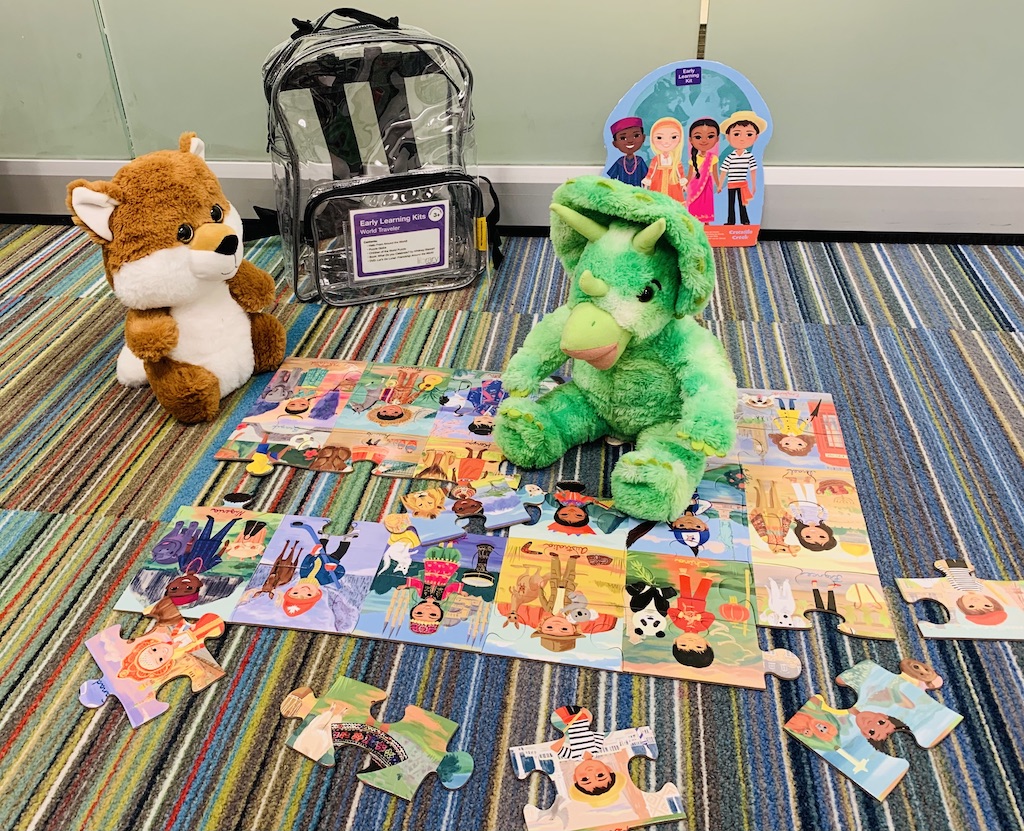
Children of the World puzzle is a great tool to help start the discussion of children around the world. The puzzle includes 18 children from 18 different countries. Building the puzzle will also improve your child's hand-eye coordination, strengthen their fine motor skills, and allow them to practice critical thinking and problem-solving skills.
A Puzzle Globe

Puzzle Globe from Learning Resources. The puzzle globe will allow your little one to build their fine motor skills and start to practice spatial awareness. The puzzle globe is an accurate globe of the world, and will allow your child to start to learn about other continents, oceans, and things that could be seen in each continent.
Learn how to say "hello" in other languages
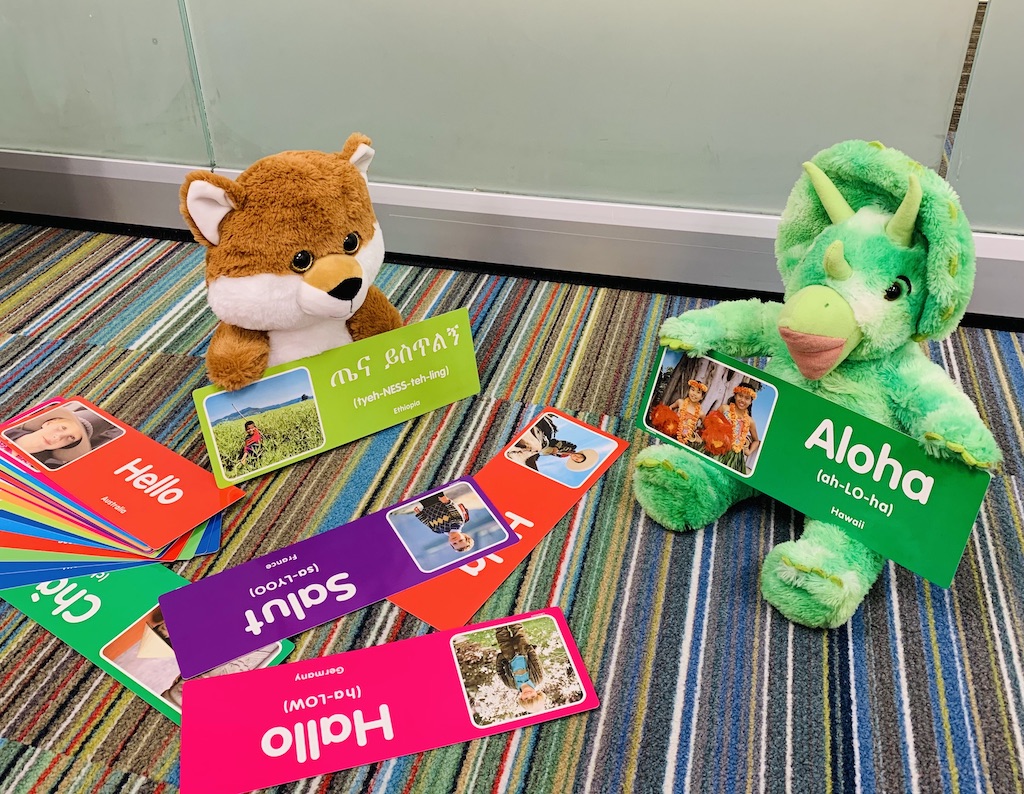
Hello From Around the World cards from Lakeshore Learning. Learn how to say "Hello" 25 different ways. Each card includes how to pronounce how to say hello in each language. These cards are a great way for children to begin to understand other languages and cultures from around the world.
Books and a movie
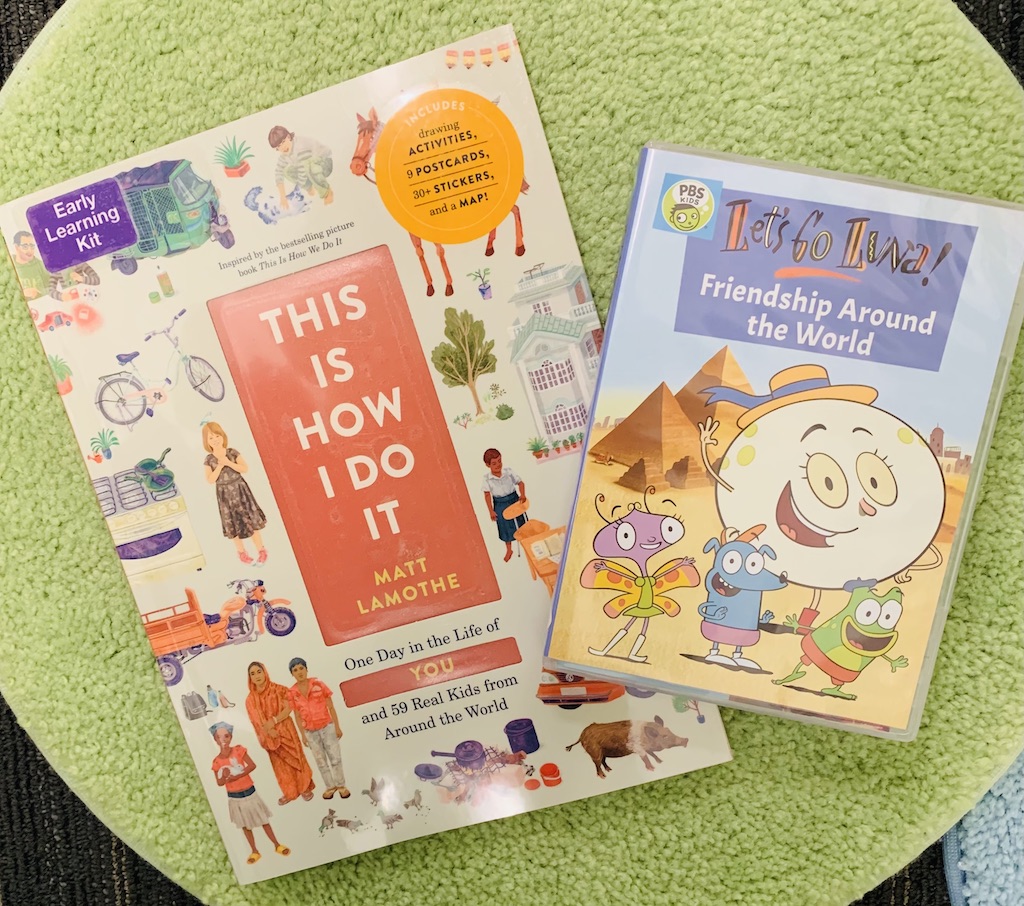
Cuddle up with this book and movie, and learn about how different kids from around the world live their lives. This will help expand your child's world.
This Is How We Do It: One day in the lives of seven kids from around the world by Matt Lamothe.
DVD Let's Go Luna! Friendship around the world.
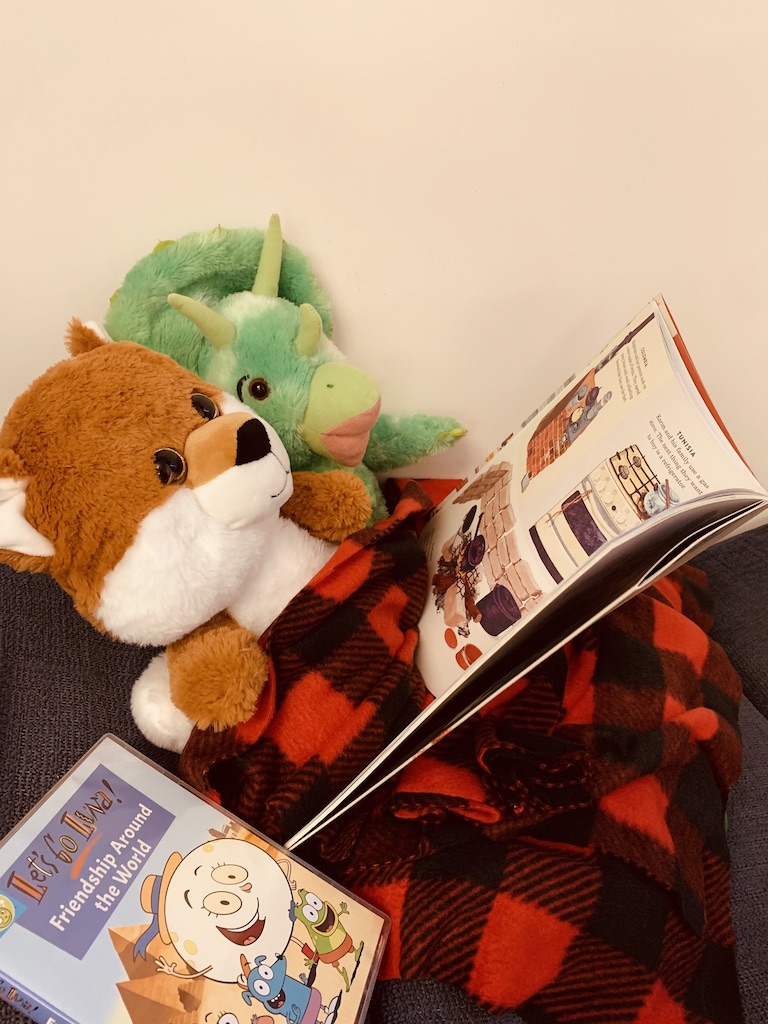
Families
Families come in many different shapes and sizes. Learn about families with books and activities. Recommended ages 3+. The Families kit will help begin the conversation about many different types of families there are in the world, and what those families might be.
Mix and Match families

Mix and Match Magnetic Families from Lakeshore Learning. Through the Mix and Match Families set, a child can begin to explore unique and different types of families. The magnetic pieces will also help build stronger hand and eye coordination.
Books and a movie about different kinds of families
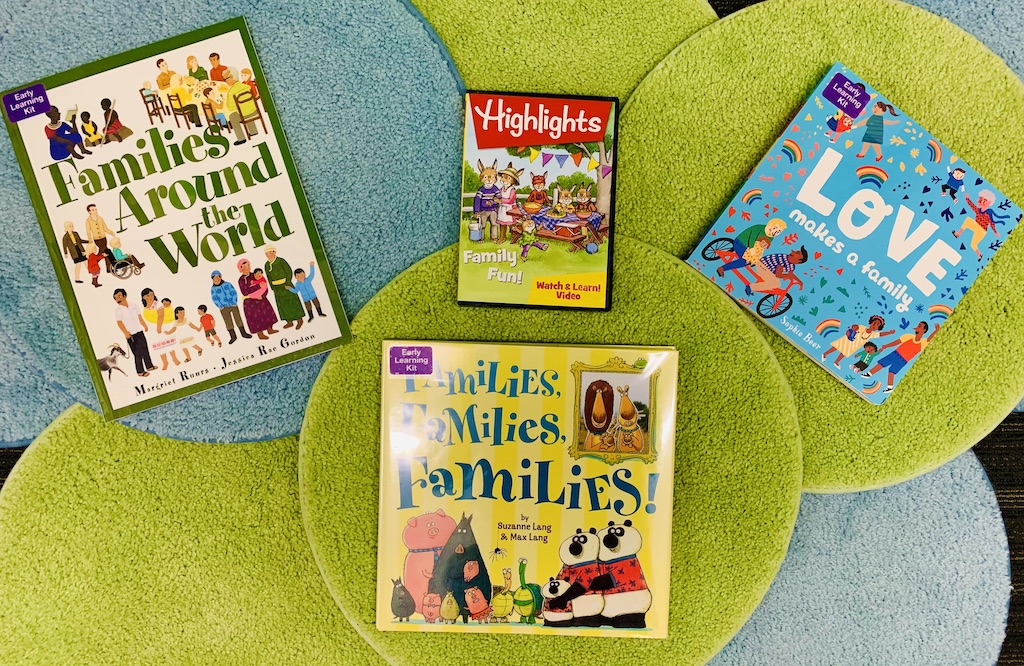
Cuddle up with these books and learn about all the different types of families in the world today. Learn about the importance of family, and the love of a family. These titles are a great way to begin to discuss with your child your family and other types of families they may know.
Families Around the World by Margriet Ruurs, illustrated by Jessica Rae Gordon
Love Makes a Family by Sophie Beer
Families, Families, Families! by Suzanne Lang & Max Lang.
DVD: Highlights: Family Fun!
Both the World Traveler and Families kits will help keep your child engaged and learning about different cultures, places, and people from all around the world.
Check out all of the different Early Learning Kits available at the library.
 Youth Services Assistant Librarian MaryJo
Youth Services Assistant Librarian MaryJo -
Five Things You're Already Doing to Raise a Reader
There are lots of articles about all the many things yououghtto be doing to raise a smart, successful, independent, empathetic, basically perfect human being. This is not one of those articles! I’m happy to tell you that raising a reader is not an intimidating challenge, and you are already doing it better than you think. In fact, I bet you’re crushing it! Here are the five activities that prepare a child to learn to read in the first five years of their life.
1. Read
Research shows that reading even to babies isbeneficial for their brain development. But reading to babies, and especially to walking toddlers, can be very difficult. Some children take to books like cats to cream; while others… not so much! It doesn’t mean you should be worried, or that you should force a child to read when they would rather toddle around or play with a ball. Here are some other ways to share “reading”:
- Keep board books available along with toys as a part of play time.
- Let your child flip through the pages, even if it’s too fast for you to read the words. They are learning how a book “works,” which is important, too!
- Point and identify ANY words or images, even outside of books. You are teaching your child that pictures mean something, which is the basic building block of reading.
- Pick up a book - one from your shelf, or even one of your child’s - and quietly read in front of your young child, even for a few minutes. Demonstrate that it’s a valuable part of your life.
- Come to one of our story times! We will share fun and new-to-you books, as well as songs and rhymes that you can do at home.
2. Talk
The more sounds and words your child hears, the better equipped she is to start pulling from that bank of phonemes when she starts learning how reading works. You’re also giving your little one the chance to practice the oh-so-important back-and-forth rhythms of conversation, even if they are just babbling with you, like in the video below. Sometimes it can be exhausting to think of things to talk about with your baby or toddler - try narrating whatever you’re doing. For instance, driving, cooking, cleaning, playing.
3. Play
Play is physical, mental, emotional, and social. It’s practice for all of life, including reading. Playing with small objects develops fine motor skills needed for holding books, turning pages, and writing letters. Playing with anything enhances critical thinking - think about cause & effect (block towers knocked down!), object permanence (peek-a-boo!), and problem solving (puzzles!) - all of which will become more abstract as reading comprehension and narrative skills develop. Playing in an imaginative way increases a child’s understanding of emotions (playing “bad guy” and seeing the consequences on someone else) and narrative structures (First, this happens, then….). There’s SO MUCH benefit to play, and thankfully kids need no encouragement from us to do it. But adult facilitation can add much to play, even just the bonding that naturally happens through enjoyable shared experiences.
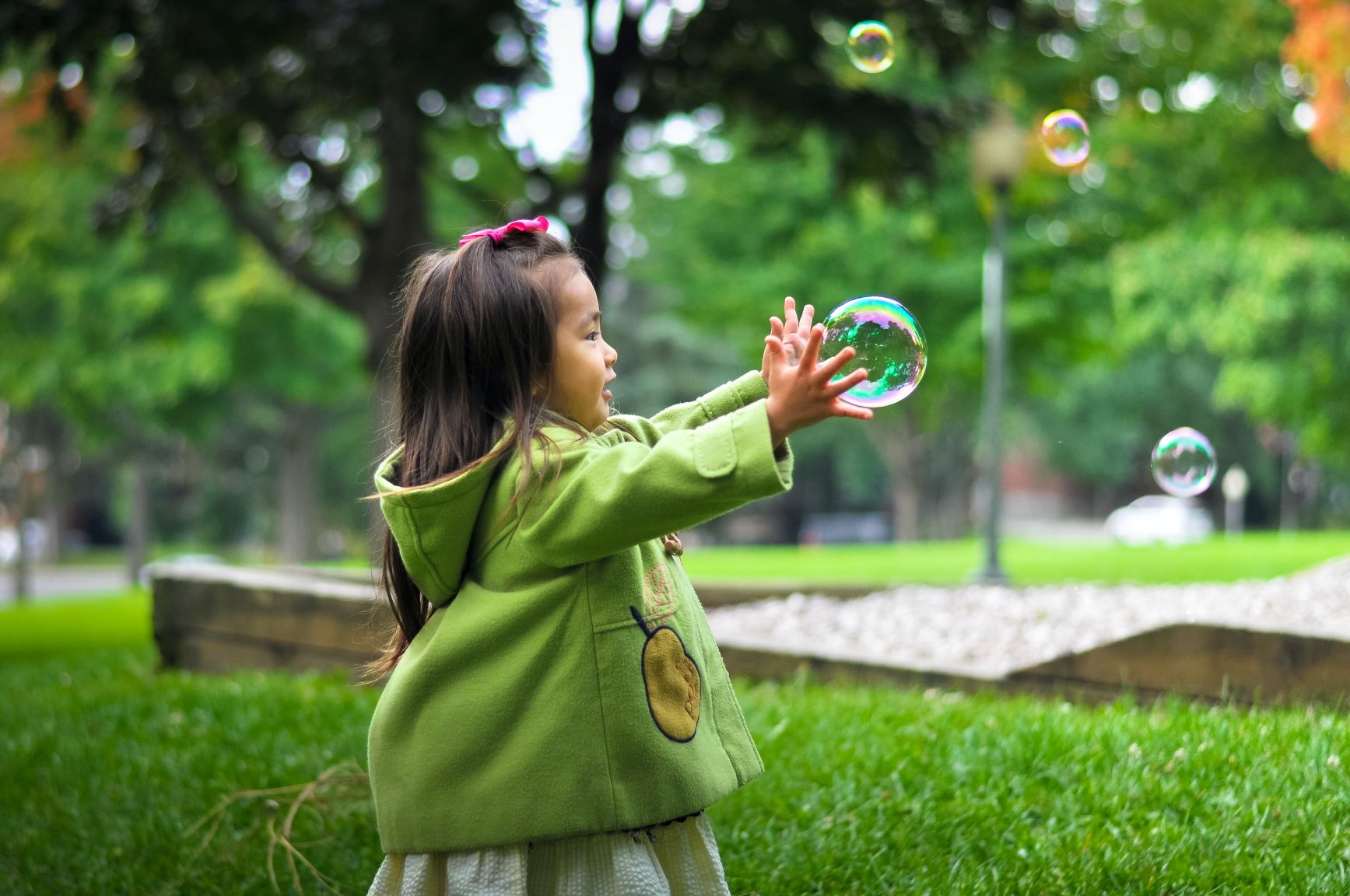
Photo by Leo Rivas on Unsplash
4. Sing
Any kind of music can be beneficial to ababy’s development, but singing is in particular a valuable pre-literacy activity because it slows down our speech. Pairing a note with a sound and a beat gives little brains more time to process phonemes. (Sing “Mary Had a Little Lamb” in your head, and you’ll notice how each syllable gets its own separate note.) Babies don’t care if you’re tone-deaf, so sing with abandon. (Though if you just can’t stand the sound of your voice, trysayingthe lyrics on beat.) Songs often have the added benefit of rhyming, which gives little brains more opportunities to hear and connect similar sounds.
5. Write
Don’t panic: your 2-year-old should not be writing their name yet! Writing as a pre-literacy activity just means preparing your child for the eventual fine-motor skills that will be required to grasp a pencil and create recognizable letters on a page. It really means strengthening little finger muscles! Here’s what “writing” might look like:
- Grasping or sorting small objects
- Fingerplay rhymes & games
- Baby sign language
- Playing with or using crayons, markers, glue sticks, chalk, etc.
- Tracing lines or letters
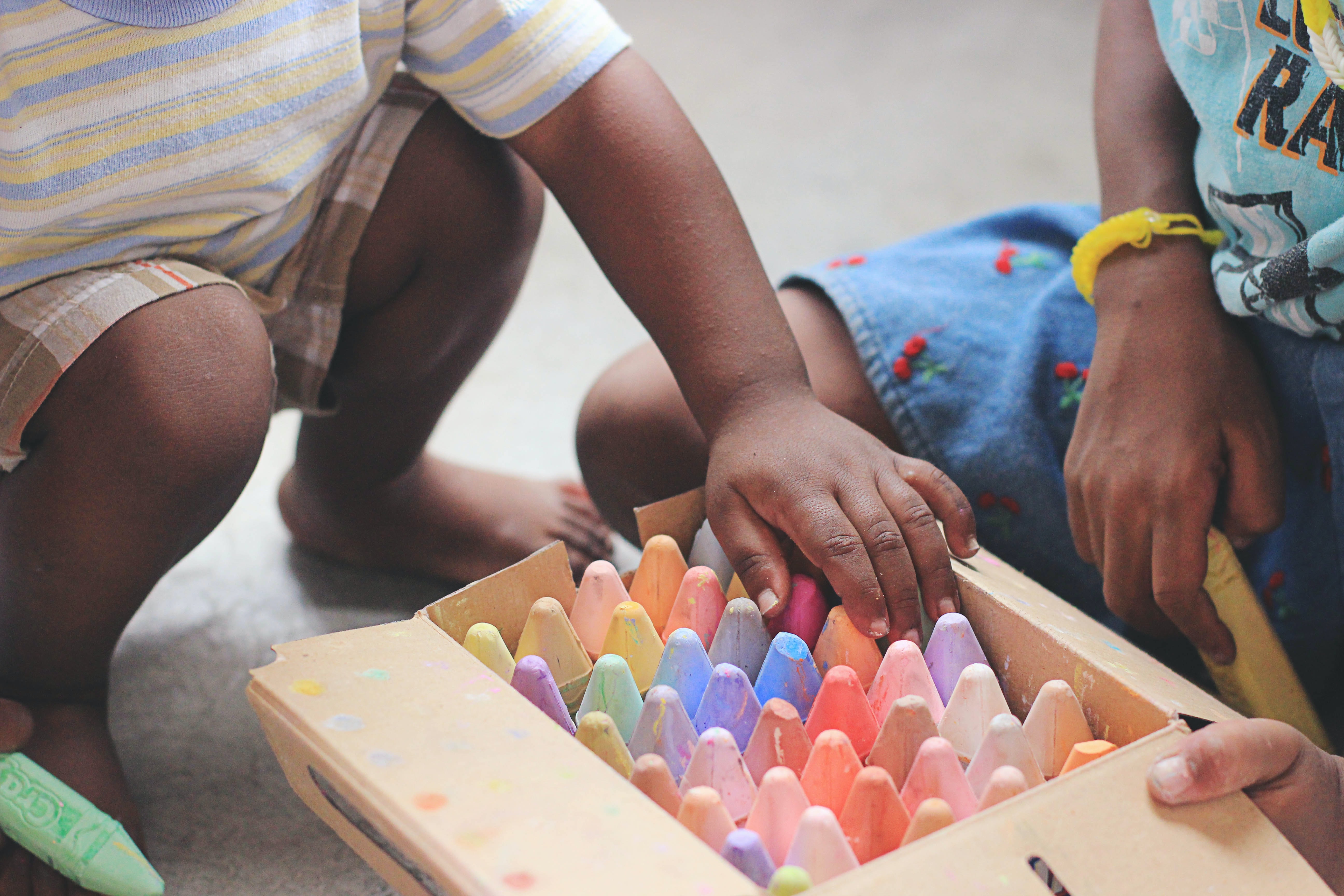
Photo by Tina Floersch on Unsplash In all likelihood, you recognize at least a few of these activities in your daily life with a very young child. Pat yourself on the back - you are doing it! You are raising a reader!
 Youth Services Librarian Allison
Youth Services Librarian Allison

